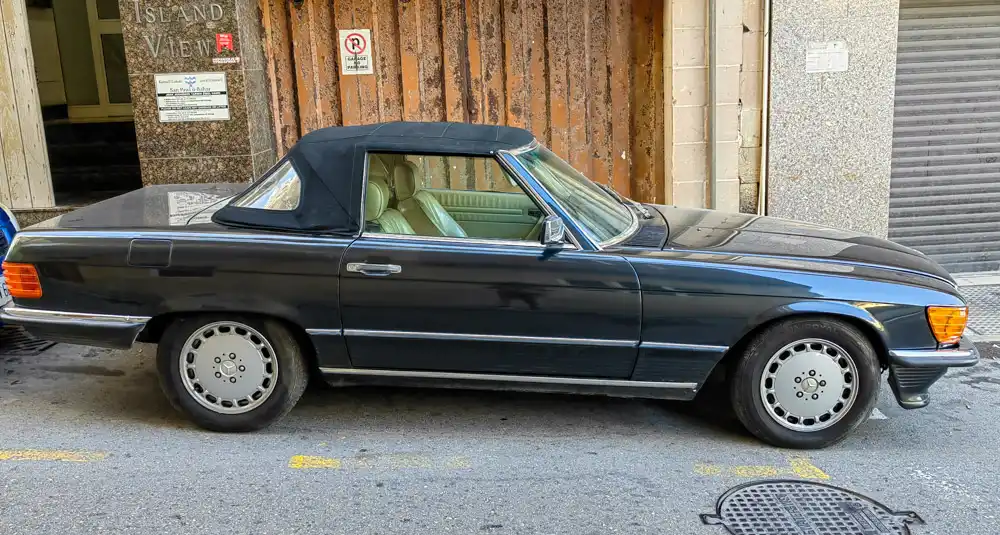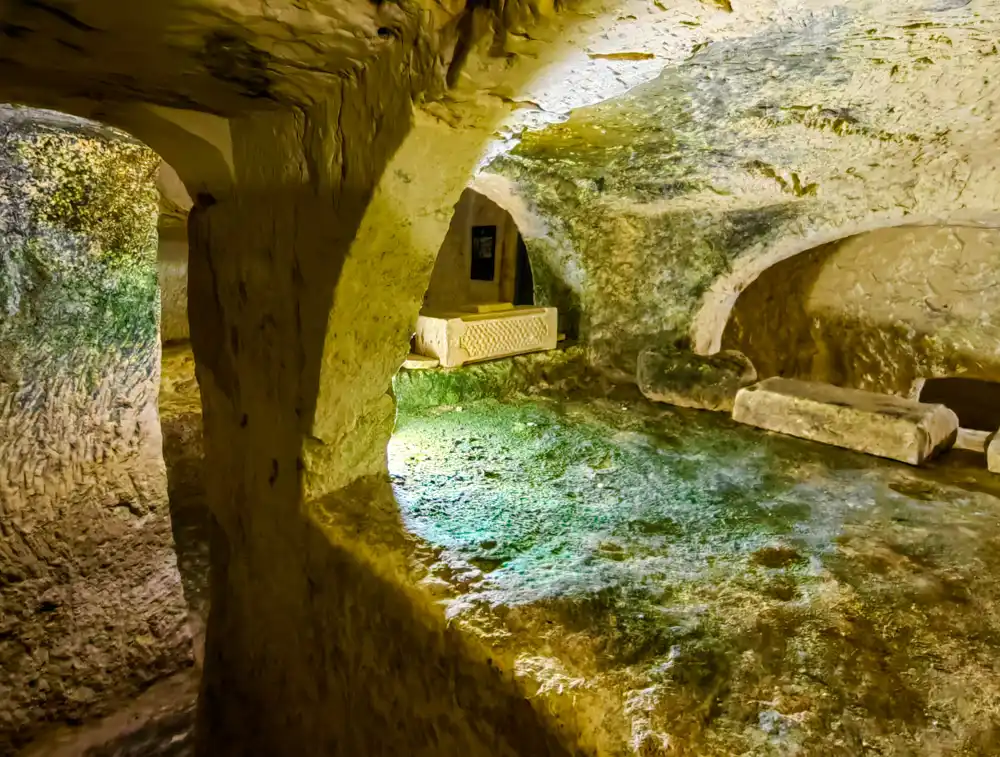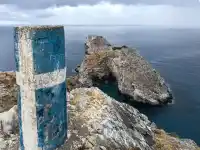Rabat and Mdina impressed me with their calmness on my last visit to Malta. But I didn’t manage to visit their most giant Christian monument, the Cave of St. Paul, with its catacombs dating back several millennia. Today that time has come: the St. Paul’s Catacombs to the underground of Rabat.
St Paul’s Catacombs
If you’re claustrophobic, you’d better skip the visit. The stairs will take you first to the first level of the underground. The Maltese built air-raid shelters under the cathedral during World War II. At the end of them, stairs lead down. Only then you will enter ancient history.



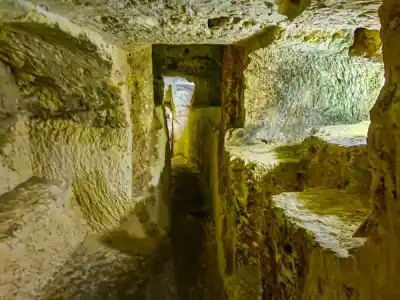
The Catacombs of St. Paul served as a burial site from Punic, Roman and Byzantine times. It is one of Malta’s oldest and most significant monuments of Christianity.
According to Roman law, the dead could not be buried in the city, so they created underground complexes of burial chambers nearby. The town of Mdina, also called Melite during the Roman occupation, created a burial chamber for this purpose right here in St Paul’s.
There are speculations that the catacombs were once directly connected to St. Paul’s Cave.
Archaeological excavations prove that the cave and the catacombs were originally part of a large cemetery for Mdina. This burial site was used as early as four centuries BC and continued functioning until the 7th century AD.
The catacombs cover an area of more than 2000 m2.
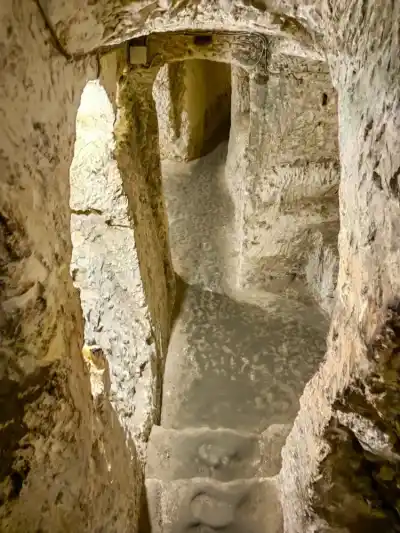
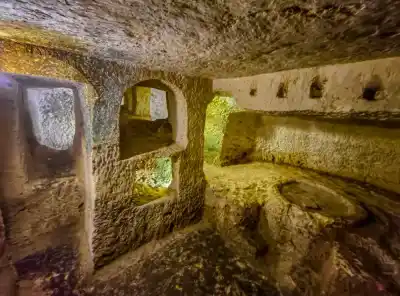
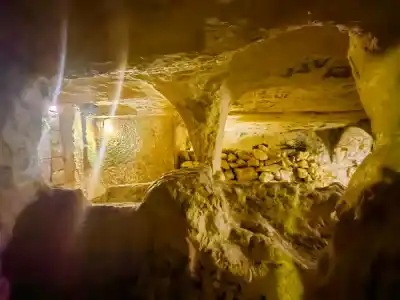
St Paul’s Grotto
St Paul’s Grotto is next to the catacombs, under the cathedral. According to the Book of Acts, it was here that St Paul and his missionary party came as refugees when their ship was shipwrecked on the island of Malta en route from Crete to Rome.
After arriving at St. Paul’s Grotto in Malta, they began to preach Christianity to the Maltese people.
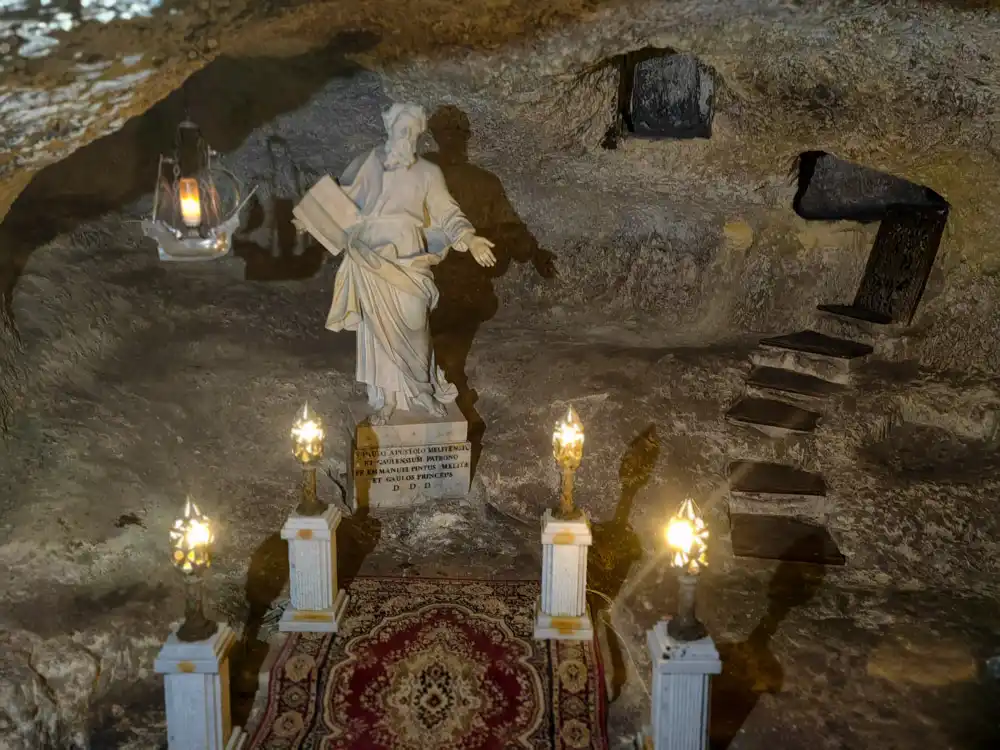
Here is the birth of Christianity in Malta
Saint Paul spent 3 months here. The cave is so famous that Pope Benedict and John Paul II visited and prayed there.
St. Paul’s Cathedral

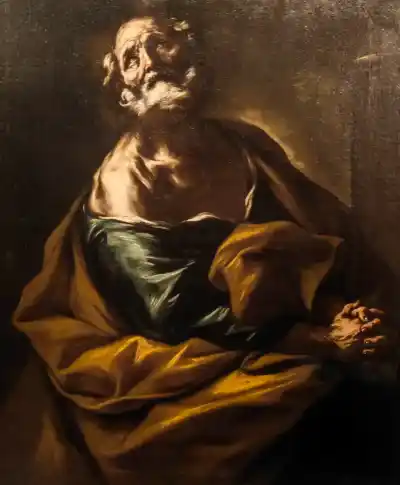
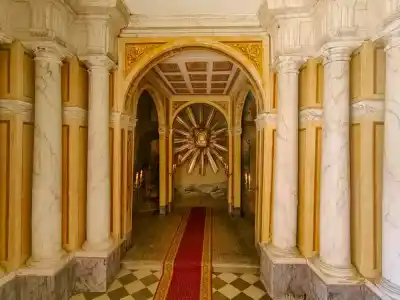
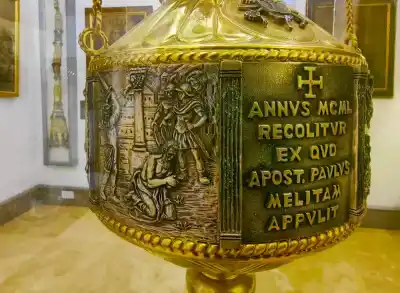
Directly above the grotto is the cathedral with a picture gallery and a church museum.
The ticket to the catacombs also serves as a ticket to the museum. The 17th-century Baroque cathedral is impressive.
The museum houses some of Malta’s most important monuments. Paintings by Giovanni Battista Beinachi, the statue of St. Paul by Grand Master Pinto or the impressive silver gallery created in the 1960s by the Knights of the Order of St. John.
You will also find the first presidential car which drove around Malta.

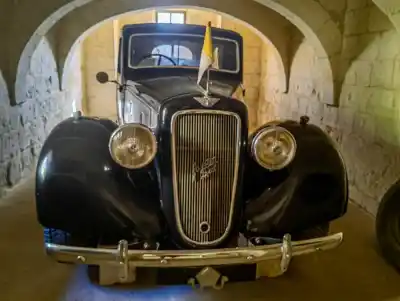
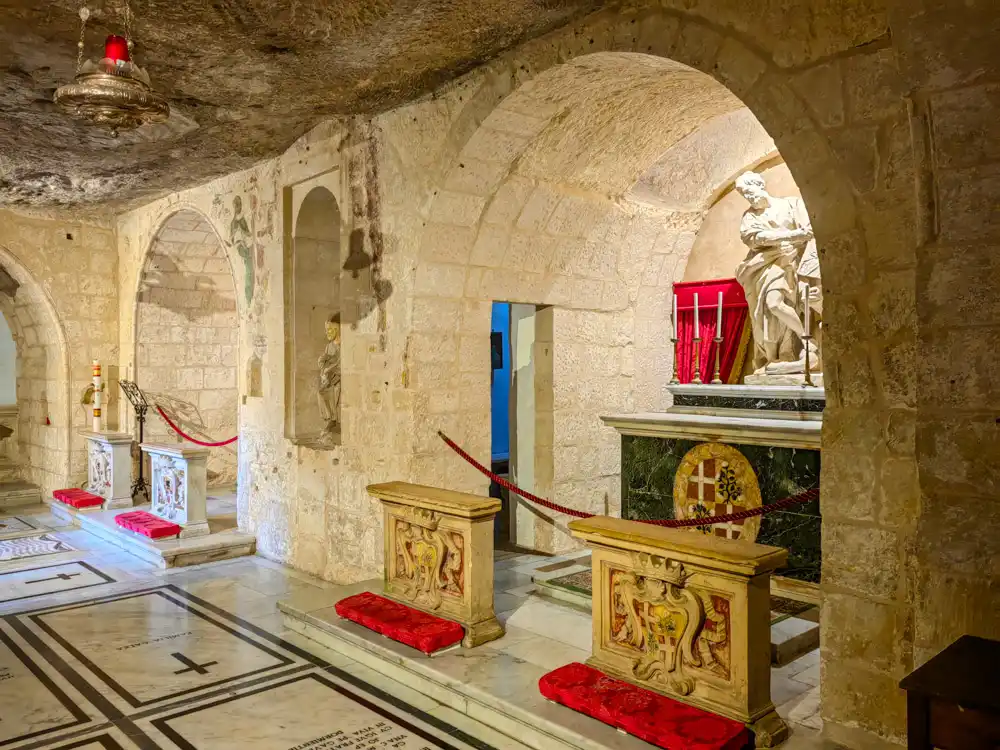
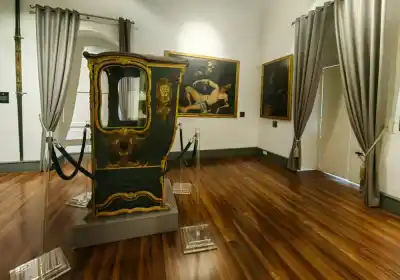
Rabat
Although Valletta is currently the capital of Malta, it wasn’t always so. The country’s original capital was here. Medieval walled Mdina with its suburb of Rabat.
Perhaps because I chose a Sunday morning to explore the catacombs and Rabat, I expected silence, peace and immense tranquillity. I found still lifes worthy of impressionist paintings in the alleyways’ nooks and crannies.

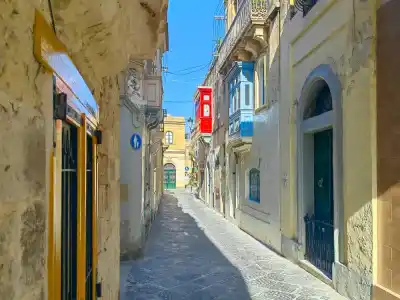

Streets of Rabat
All the tourists in Rabat head to the Domus Romana. It is undoubtedly the most important Roman building in Malta. But it was because of these still lifes that I didn’t make it. Those alleyways totally got me.
I also found a tremendously stylish balcony. I found the bones fit for me. Even trees worthy of immortalization.
It was supposed to be Sunday calm here, but fate has changed everything again.



Franciscan procession
On this Sunday, the Franciscans organised a grand Christian procession that brought the whole of Rabat and Mdina to its feet. It started with a band, followed by a long, slow procession, and at the end, everyone joined in. Even the horses, donkeys, carts, children….
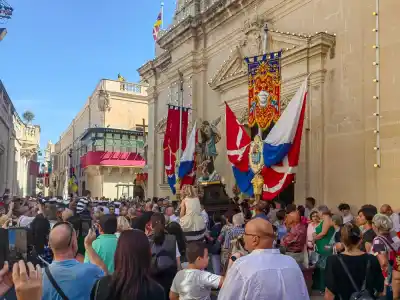
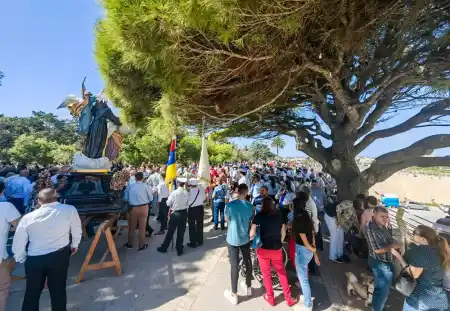
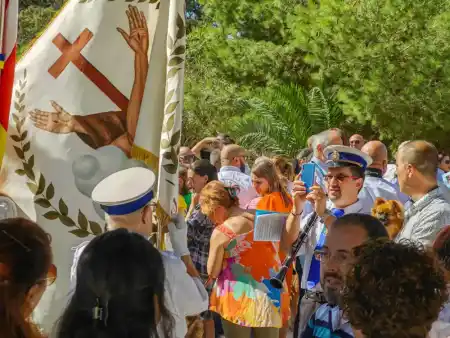
It’s a fascinating experience; believe me, you feel like you’re in Sicily in the last century. Malta, or the part around old Mdina, is undoubtedly conservative and Christian.
The parade passed through most of the central streets, and what was left didn’t smell, but nobody minded.
The procession is something like sanctification for the Maltese.
I couldn’t get enough of this dude. The great Franciscan glory parted after lunch. The marches of that big band were still playing in my head half the day. But by then, I was waiting for my bus to Valletta.

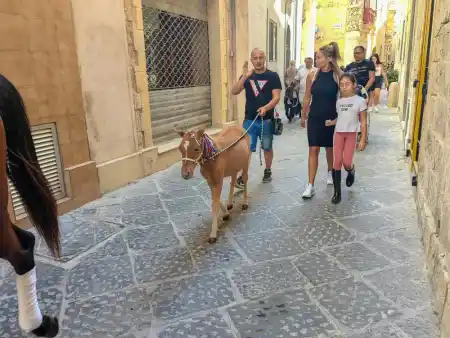
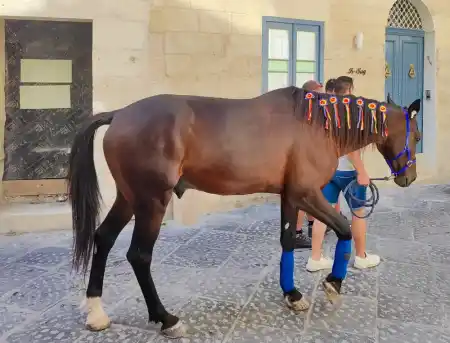
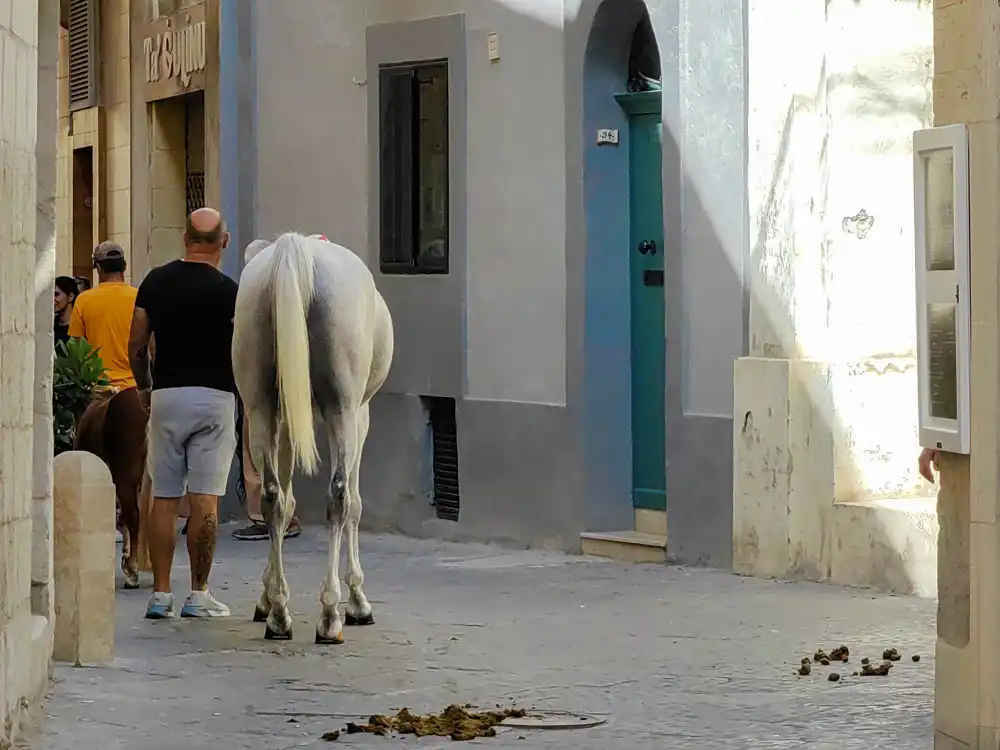
Travelling cultishly
Take this old bus if you want to travel between Valletta and Mdina in style. Today it runs as a tourist attraction, but it will take you back half a century. The fare is worth every penny.
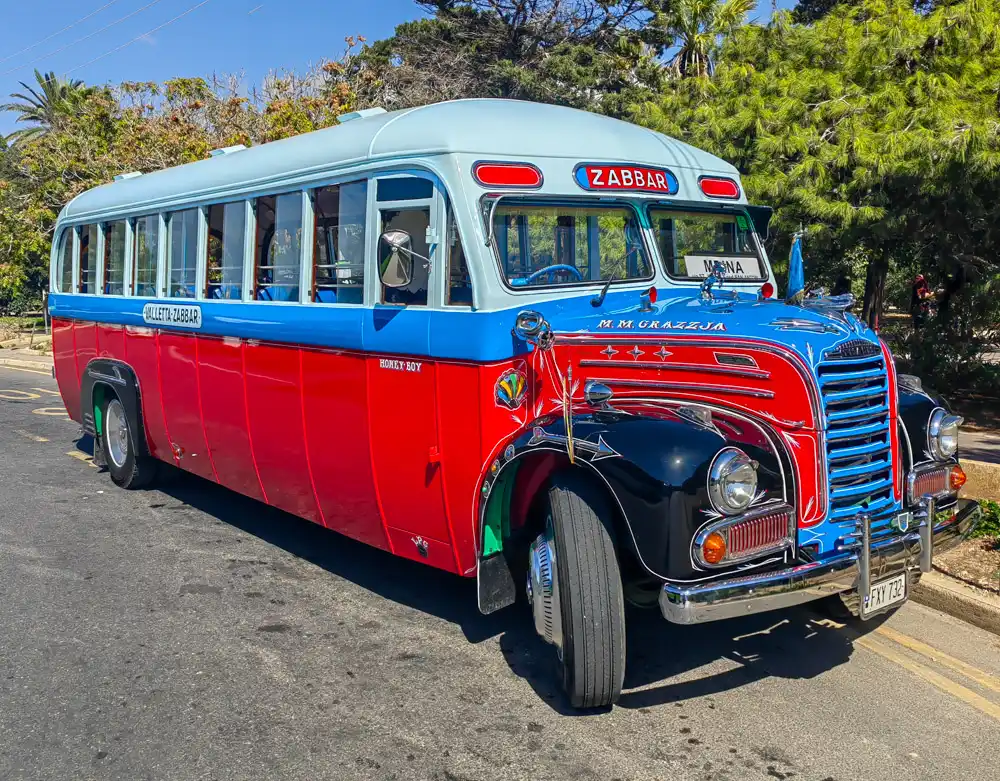
Apart from the retro bus, I discovered another transport alternative in Rabat that made my heart ache. Mercedes SL 320 Cabrio. Unfortunately, I didn’t have the keys to this three-litre mustang for two tourists. 🙂
My goodness that would be a vehicle.
